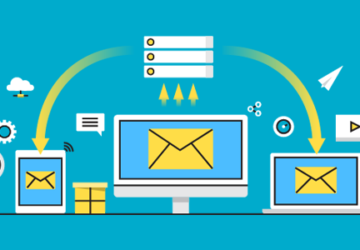The digital age has irrevocably changed our culture. It has glued us to our phones, given us countless ways to communicate with one another, even altered our sense of identity.
Moreover, digital technology has paved the way for numerous other technologies, including AI, cloud computing, and analytics.
These technologies are already impacting every aspect of our lives.
AI is being used to power chatbots, to provide us with personalized recommendations – think Amazon, and to drive our autonomous cars.
Cloud computing is helping organizations be more nimble and mobile while also changing the technological infrastructures required by those same companies.
Finally, predictive analytics is giving us valuable insights into different sectors, such as finance, manufacturing, and, of course, healthcare.
But, before we can answer the question of how predictive analytics is impacting healthcare, we need to differentiate between some key terms.
Predictive Analytics vs. Artificial Intelligence — What Is the Difference?
One of the main advancements underpinning most of the new technologies coming out of the digital age is the production of copious amounts of data.
Every digital interaction we go through can be considered as a data point. Since the average person goes through thousands of digital interactions daily, you can only imagine the amount of data that can be collected about each of us.
While both AI and predictive analytics rely on this data, it would be a mistake to conflate the two technologies.
Predictive analytics relies on historical data to predict what will happen in the future.
The idea is to build mathematical models that encapsulate certain trends or patterns embedded within the historical data and then to combine these models with more current data to predict how things are going to turn out.
Alternatively, AI, specifically machine learning, revolves around building an algorithm that learns autonomously and gets better with time.
The idea here is that the algorithm starts out with a set of assumptions which it tests against existing data, and, afterward, the algorithm corrects assumptions that proved to be fallacious.
This means that the algorithms don’t necessarily have to be constrained by a set of rules or regulations; these will come naturally with training.
So, even though both AI and predictive analytics perform similar functions, looking for patterns in data, the two go about it in different ways, occasionally yielding different results.
Does This Mean That AI and Predictive Analytics Do Not Intersect at All?
While AI isn’t the same as predictive analytics, you can use AI to generate predictive models.
This will yield AI-based predictive analytics, and this might explain some of the confusion.
AI can help predictive analytics build more accurate models, produce more detailed insights, and create models that keep learning and updating themselves when presented with new data sets.
This is not to mention how AI can be used to clean data, bring it all together in a centralized place, and automatically start analyzing to update the existing predictive models, all with minimal outside intervention.
How Is Predictive Analytics Impacting Healthcare?
Although it is generally associated with manufacturing and production, predictive analytics provides several benefits to the healthcare sector.
Benefit No. 1: Behavioral Analytics
Simply put,behavioral analytics tries to predict how individuals will behave, based on the relevant data collected.
Behavioral data is any data point generated as a result of your behavior or your engagement with a business.
This data is then collected and used to build your profile, which can help healthcare establishments predict your behavior.
Benefit No. 2: Increasing Operational Efficiency
With the help of predictive analytics, healthcare facilities can optimize their operational efficiency.
Not only does this mean saving money and reducing expenses, but it also leads to offering patients a better healthcare experience.
Benefit No. 3: Personalization
Personalization has been a big trend over the past decade across all industries, and the healthcare sector is no exception.
If anything, seeing as different people may react differently to the same medication, it would be fair to say that the healthcare sector is in need of personalization more than other industries.
New technologies allow healthcare providers to tailor their approach to each individual patient and their needs.
In the following section, we’ll go over some ways in which these technologies are used in healthcare.
Some Use Cases of Predictive Analytics in Healthcare
Let’s take a look at how the aforementioned benefits of emerging technologies such as predictive analytics are applied in practice.
Leveraging Behavioral Analytics
Behavioral analytics allows providers to predict their patients’ conduct concerning the treatments offered, which helps pre-empt unfavorable behaviors and their consequences.
Predicting Drug Adherence
One of the largest issues most physicians face is that their patients may fail to adhere to their drug plans.
This can be a major problem, particularly for patients with chronic illnesses, a problem that costs more than $100 billion every year.
With predictive analytics, physicians can anticipate which of their patients are least likely to stay on course and then target those patients with intervention plans to boost adherence and save lives.
Anticipating No-Shows
When patients fail to show up for an appointment, everyone involved suffers the cost.
On the one hand, both the healthcare provider and the payer lose money.
On the other hand, the patients themselves risk deterioration, as they fail to treat whatever medical condition that spurred them to make the appointment in the first place.
Therefore, there are two benefits for doctors who can predict which patients are likely to flake on their appointments.
Firstly, they can rearrange their schedule accordingly and in a timely manner.
Secondly, they can come up with intervention plans to engage the patients and to increase the likelihood of them showing up.
As a result, such physicians improve both the standard of care and the efficiency of their business.
Increasing Operational Efficiency
Predictive analytics increases the operational efficiency of healthcare providers in a variety of ways.
Preparing for Surges
Almost every hospital has had to deal with a surge of patients flocking into a hospital at one point or another. If the hospital isn’t prepared, it may suffer from a shortage of resources, impacting the quality of care offered to patients.
For instance, there might not be enough beds, or the number of doctors on call may be nowhere near what’s needed.
The good news is that armed with the right data, hospitals can anticipate surges and prepare for them.
This might mean hiring extra staff or getting temporary beds before they are truly needed.
What’s even more fascinating is that the data can include anything from meteorological information, to the day of the week, time of the month, or ongoing events, such as national holidays.
In short, it can predict any factor that contributes to surges.
Planning Equipment Maintenance
One of the most costly problems in any industry, not just healthcare, is the breakdown of equipment.
If an MRI machine breaks down, not only is the hospital losing money, but the patients themselves will also have to wait until the machine is fixed. This is not to mention the costs of fixing it.
With predictive analytics, no hospital has to wait around for the next piece of equipment to malfunction.
Instead, healthcare facilities can be proactive and maintain their equipment before it ever needs fixing.
Better yet, this maintenance can be scheduled for times when it causes the least disruption to the flow of the hospital.
Another major benefit of predictive analytics in healthcare is that it can be combined with IoT, the technology responsible for enabling our devices to communicate with each other.
Hence, an MRI machine fitted with a few sensors can communicate with our predictive model, feeding it data and letting it know when we should open the hood and change the oil, so to speak.
Personalizing Treatment
We’ve already mentioned personalization as a major benefit of predictive analytics in the healthcare sector.
Here are some ways in which it can be applied in practice.
Reducing Readmissions
Readmissions are another element that adversely impacts the patient, the provider, and the payer. It burdens hospital resources and stresses the patient both mentally and financially.
However, with the data about the patient’s socioeconomic status and their Electronic Health Records, shortened as EHR, hospitals can predict which patients are at a high risk of readmission while diagnosing them.
Accordingly, these patients can be given special medical treatment to reduce the likelihood of readmission.
To get an idea of how big a problem this is, it is worth knowing that Intel worked with Cloudera to help a hospital group reduce readmissions. The result was a reduction in readmissions by 6,000 occurrences.
Additionally, the group was able to save around $72 million in annual medical costs and to avoid potential Medicare penalties that would have added up to $4 million.
Forecasting the Length of Hospital Stay
One of the primary contributors to medical cost is the length of stay, and this cost is carried by everyone involved. Patients who spend longer times in hospital not only have to foot a much larger bill, but they also run a much higher risk of hospital-acquired infections.
On the other hand, long stays end up tying a hospital’s resources and taking up the physicians’ time, depriving other patients of the care they desperately need.
However, if a hospital can predict the length of a patient’s stay, it can start scheduling around that and create special intervention programs for at-risk patients. This will only lead to a high quality of care.
Again, when Intel and Cloudera helped a hospital group to predict how long their patients would stay, the results were astounding.
Because the group was able to schedule more efficiently, it ended up saving around $120 million from its annual costs, which came down to around $12,000 for every patient.
What’s more, since the facility utilization was improved by five percent, the group was potentially able to care for another 10,000 patients over the year.
The Downside of Predictive Analytics
While predictive analytics is a powerful tool that promises to revolutionize the healthcare industry, this does not mean that there aren’t risks associated with it.
For one thing, technology is evolving at such an exponential rate that the quality of healthcare facilities are bound to feel the impact.
Also, data storage in the cloud is a challenge, especially since medical information needs to remain sensitive and private.
If this information is leaked in any way, this could lead to a loss of trust between the patient and their physician.
There are also questions around moral hazard and how to structure the intervention points between man and machine.
This is not to mention how the entire space surrounding predictive analytics is still largely unregulated.
So, while there is a definite upside to predictive analytics, healthcare providers should always proceed with caution, keeping an eye on the possible dangers ahead.
Conclusion
AI and predictive analytics promise to revolutionize the healthcare industry.
These emerging technologies allow professionals to personalize their approach to patients, anticipate their behavior when it comes to receiving treatment.
This, in turn, allows them to increase the operational efficiency of their facilities, raising the standard of care.
These changes are part of the ongoing digital transformation of our professional landscape.
—
Lisa Michaels is a freelance writer, editor, and a thriving content marketing consultant from Portland. Being self-employed, she does her best to stay on top of the current trends in business and tech. Feel free to connect with her on Twitter @LisaBMichaels.







